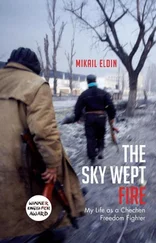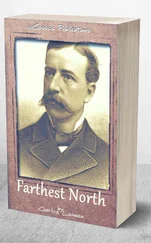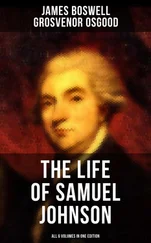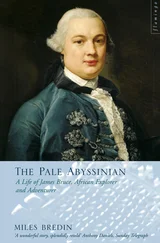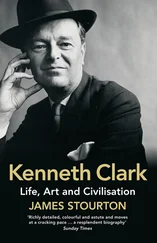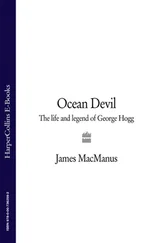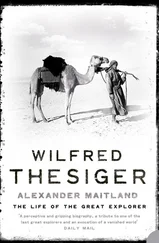Carter had no idea what was going on.
“Mr. Marins,” Brown said, “do you know that you are the plaintiff in an action against Elizabeth Paraglia owner of the Lafayette Grill?”
“True.”
“Do you recall having testified in depositions taken before a notary public … on December 16, 1966?”
“True.”
“Do you recall signing these depositions and stating under oath they were true?”
“True.”
“You were out of the hospital?”
“True.”
“You had been discharged?”
“True.”
“Your health then permitted you to go to a lawyer’s office and give depositions, is that correct?”
“True.”
“Your lawyer was present?”
“True.”
Brown bored in. “You were asked, ‘Did you recognize the men who shot you?’ Your answer: ‘I know they were colored, light-colored, and one in particular, the first one with a shotgun, had a mustache that I just happened to see, and the man in back of him was about the same height.’ Did you give him that answer?”
“True,” Marins replied meekly.
“You were asked, ‘How tall are they?’ You said, ‘Six feet, maybe five eleven, six feet.’ Is that correct?”
“Well, I said six feet. Maybe.”
“Isn’t it a fact that you told Detective Callahan six feet, slim build, sir?”
“When was this?”
“June 17, 1966, in the emergency room.”
“I don’t remember because I was in a state of shock.”
“Were you in a state of shock in December 1966?”
The judge had seen enough. “He said no, and he doesn’t remember what he told Detective Callahan, whether it is the same or not.”
Brown had cut Marins to shreds, but there was no joy at the defense table. The lone survivor had inexplicably changed the very statements that had once helped clear Carter and Artis of suspicion, and Carter quietly seethed.
Despite his renowned temper, Carter remained calm during the proceedings. Hundreds of times he had to stand up before prospective jurors to be identified, but he never balked or showed any annoyance. The Evening News said he acquired the stance of a “mild-mannered student.” His wife brought him a clean suit and dress shirt every night at the jail, and throughout the trial he took copious notes on a yellow legal pad. Only once did Carter vent his rage in the courtroom. His nemesis, Vincent DeSimone, sat next to Hull at the prosecutor’s table. During one recess, Carter’s daughter wandered over to the table and began playing and laughing with the lieutenant. Carter bolted out of his seat and grabbed the three-year-old.
“Come here,” he said. “You don’t talk to this punk. He’s trying to put your father in jail.”
DeSimone leaned back and smiled.
“Fuck you, you fat pig,” Carter said. “You leave my daughter alone.”
The state had little evidence linking Carter and Artis to the shooting. The police had neglected to brush the Lafayette bar for fingerprints or conduct paraffin tests on the defendants’ hands after they were picked up. There were no footprints, no bloodstains, no murder weapons, no motive. There was conflicting testimony about Carter’s car. One witness, Patricia Graham Valentine (Patricia Graham at the time of the shooting), lived in an apartment above the bar. She said Carter’s white Dodge “looked like” the getaway car; both cars had triangular, butter-fly-type taillights. But another witness, Ronnie Ruggiero, also saw the getaway car and testified that he thought it was a white Chevy, not a white Dodge. Ruggiero, a white boxer, had driven in Carter’s Dodge Polara before. Then there were the bullets. Detective DeRobbio testified that he found a .32-caliber S&W lead bullet and a Super X Wesson 12-gauge shotgun shell in Carter’s car. But ballistics experts testified that the bullets found at the crime scene were .32 S&W long copper-coated bullets and Remington Express plastic shells. The bullets in Carter’s car were indisputably different from those used in the crime, but Judge Larner allowed the lead bullet into evidence because it could have been fired from a .32-caliber pistol. The same could have been said for the 12-gauge shell, but Larner still excluded that as evidence. His logic confounded the defense team.
The state’s case rested on the shoulders of its two eyewitnesses, Alfred Bello and Arthur Dexter Bradley. As a thief, Bello was more pathetic than petty. By the age of twenty-three, he had already been convicted five times on various charges of burglary and robbery. In one instance, he robbed a woman of a makeup case valued at one dollar, a cigarette case valued at two dollars, and a pocketbook valued at twenty dollars. Carter assumed that the reward for his conviction, now up to $12,500, looked mighty tempting compared to such nickel-and-dime thieving. A heavy drinker who had threatened his classmates with a penknife in grade school, Bello had spent so much time in Paterson’s police headquarters that DeSimone’s secretary referred to him as the lieutenant’s adopted son. Bello was short and fat with greased-back hair. He talked too loud and he wore high-heeled shoes. He had a tattoo on his right arm that read: “Born to Raise Hell.” He had been discharged from the Army for fraudulent enlistment. He had also been in state reformatories off and on for several years, and he was out on parole when the Lafayette bar shooting occurred. At the time of the murders, he was serving as “chickie,” or lookout, for Bradley’s break-in at the Ace Sheet Metal Company.
He was the state’s “mystery witness.”
Bello took the stand with an air of insouciant invincibility, basking in the spotlight of his sudden fame. In his answers to Hull’s questions, he gave his account of the night in question. While waiting for Bradley to break into the warehouse with a tire iron, Bello said he saw a white Dodge driving around the block with three colored men inside. He thought he saw something sticking up between one of their legs that looked like a rifle barrel. Then he decided he wanted a cigarette, so he walked to the Lafayette bar to buy a pack. As he walked toward the tavern, he heard two shots, then two shots more, then he saw two colored fellows walking around the corner, talking loud and laughing. One had a shotgun, the other a pistol. They were fourteen feet away and saw Bello, but Bello ran to safety. So the gunmen drove away in their white car. The two men, Bello said, were Rubin Carter and John Artis.
Bello then walked to the bar and saw the bodies on the floor. He went to the cash register to get a dime to call the police; instead, he stole money from the register. He left the bar, gave the pilfered cash to Bradley, and then returned to the tavern because he feared a witness had seen him leaving the crime scene. He saw Carter and Artis when the police brought them to the bar and later at the police station, but under questioning by police, he did not identify them. Then in October, Bello gave another statement to police, claiming he saw the two defendants fleeing the crime scene. He said he did not identify them on the night of the murders because he feared that doing so would endanger him.
The lies, at least to Carter, were transparent. Why would a man engaged in a surreptitious criminal activity decide to walk to a bar and buy a pack of cigarettes? How could an overweight, high-heeled Bello elude a world-class professional athlete and a former high school track star? Why would testifying now put him in less danger than on the night of the murders? Why would Carter have let the police take him to the bar if he knew somebody had seen him? Shit! Carter thought. I wouldn’t have lost anything by killing the police too—if I had been the killer!
Ray Brown’s cross-examination entangled Bello in a thicket of half-truths and inconsistencies. Even the most innocuous inquiries caught Bello in lies.
Читать дальше

